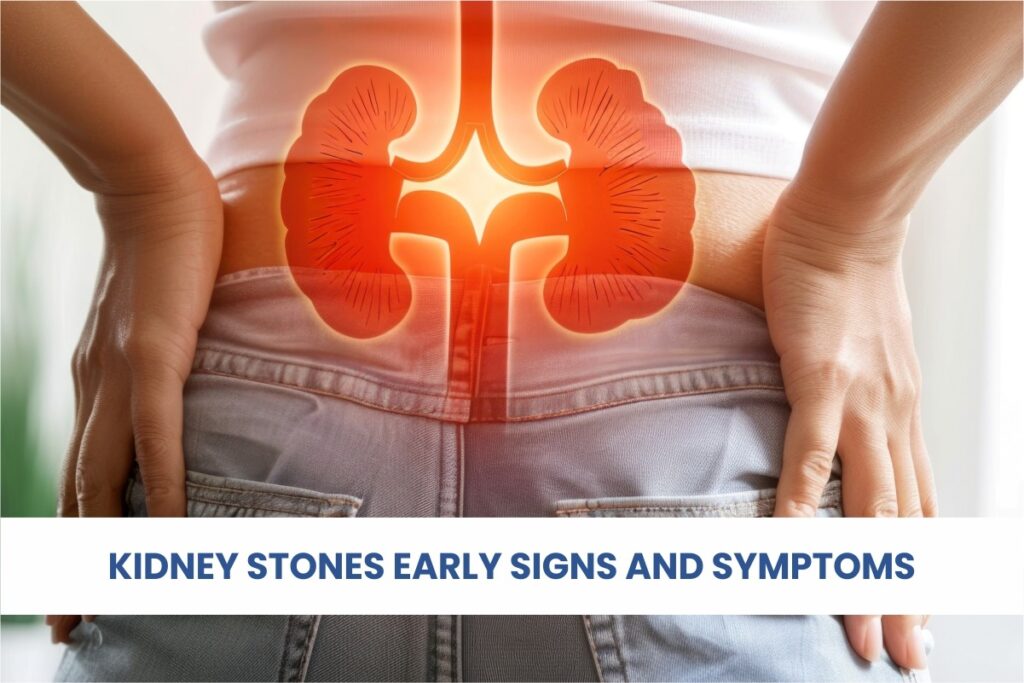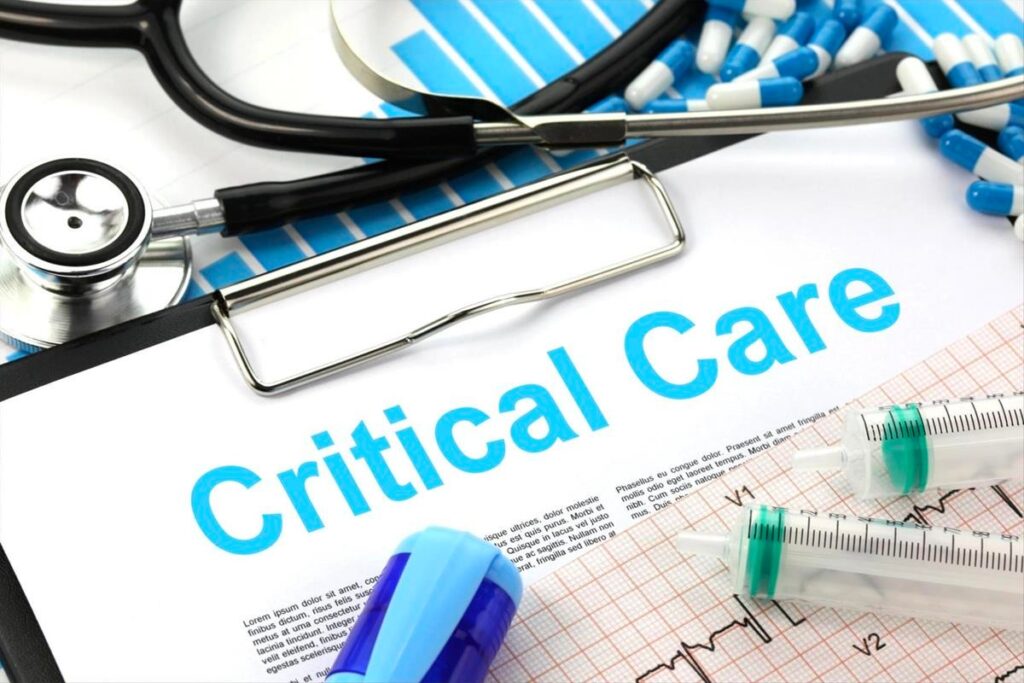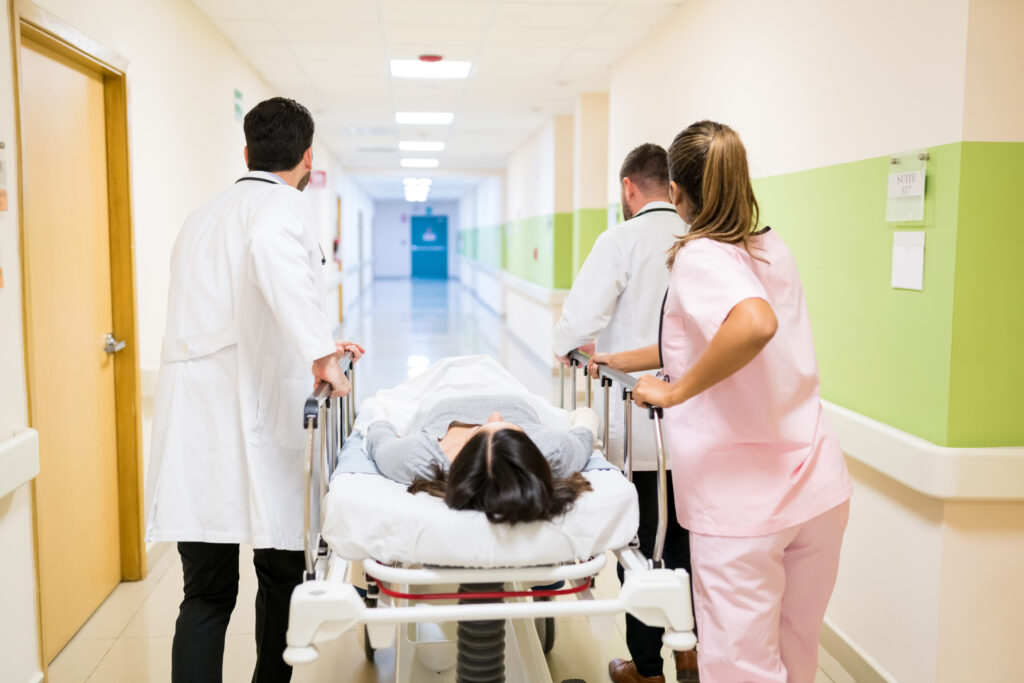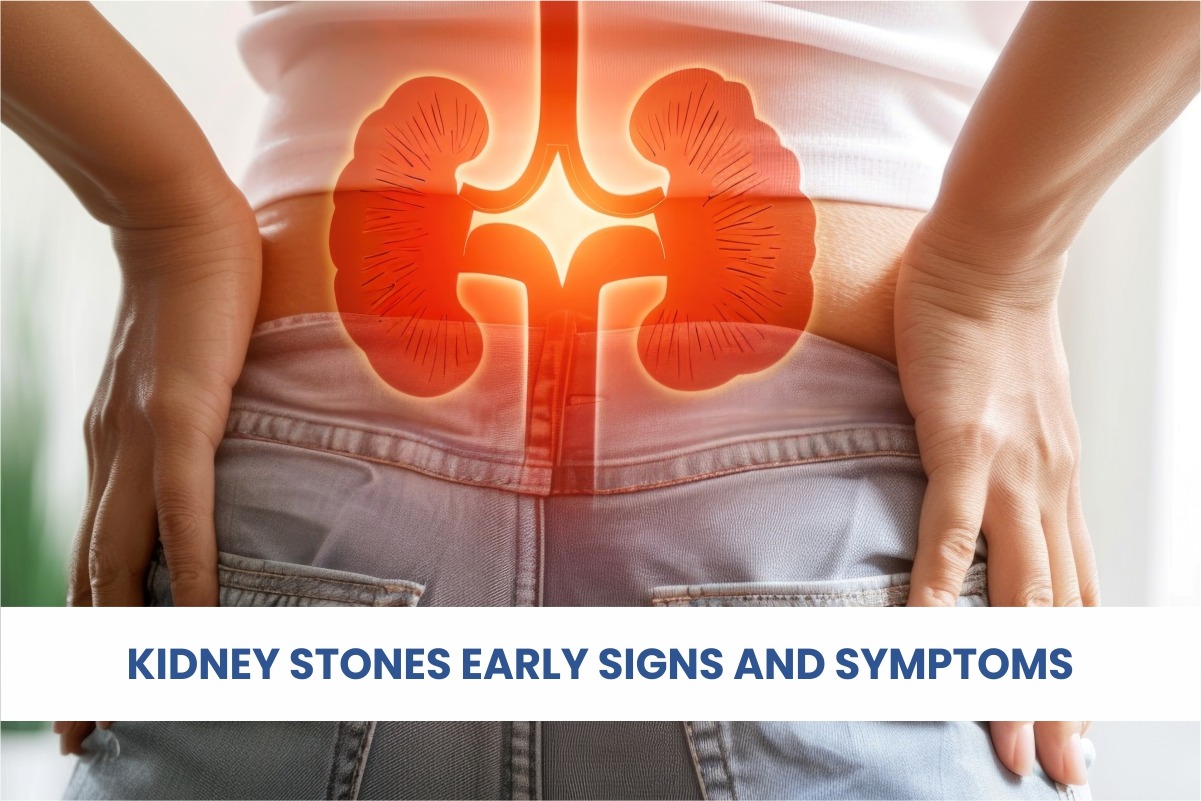Kidney stones are a prevalent health problem that affects many people of all ages and genders. That is why early diagnosis of kidney stone formation can have a great impact on managing pain and recovery. This guide looks into the early warning signs and the common signs of kidney stone formations.
What are kidney stones?
Kidney stones are solid masses or crystals that build up from minerals and salts in the kidneys. They can develop in any location of the urinary tract, including the kidneys, the tubes leading from the kidneys to the bladder, or the bladder itself. It occurs when a large amount of calcium and other minerals become deposited in the urine and stick together to form a stone.
Types of Kidney Stones
1. Calcium Stones:
Most common in the form of calcium oxalate but can also be in other forms such as brush-like structures or stellate crystals.
2. Struvite Stones:
It develops in response to some sort of infection.
3. Uric Acid Stones:
They are more common in men and may be precipitated by dehydration.
4. Cystine Stones:
This is common in individuals who suffer from a genetic disease that results in the kidneys releasing excessive amounts of these components.
Kidney Stones Early Signs:
Knowing the warning signs of kidney stone formation is imperative, with the aim of seeking medication at the earliest possible time. Here are some early indicators:
1. Pain in the Low Back, Stomach, or Sides
This is usually one of the first symptoms that people notice. They commonly develop a sharp pain in the lower abdomen area, on one side, and may later spread to the lower abs and groin.
2. Frequent Urination
You may experience the need to urinate more frequently than usual, although this may not be a definitive sign.
3. Painful Urination
Pain during the process of urination that ranges from a burning sensation to sharp pain may be a sign of the presence of a stone.
4. Blood in Urine
Microscopic examination may reveal blood in various shades of pink, red, or brown, depending on how dilute the blood present in the urine is. This is one of the typical indications that could give you information that a stone is there and has shifted in the urinary area.
5. Pain and burning during urination
Sometimes, the color or smell of urine may indicate the presence of a kidney stone or a urinary tract infection.
6. Nausea and vomiting
These are due to the inability of the body to withstand severe pain or because of the actual obstruction of the urinary track by the stone.
kidney stone early signs symptoms in females
Kidney stones are a medical condition that affects both sexes, but certain symptoms may manifest more aggressively in females because of differences in their urinary tract physiological makeup.
1. Lower Abdominal Pain
Some women may suffer severe pain in the lower abdomen that may be confused with menstrual discomfort or some gynecological problem.
2. Urinary Urgency
There is usually constant pressure to urinate, and even if a woman passes just a small droplet or a stream of urine, she feels that she needs to void her bladder. It may be even higher than in males in terms of urgency.
3. Pain During Intercourse
Ladies who experience pain during intercourse should consider speaking with their gynecologist, as this could be a sign that they are suffering from a kidney stone. This symptom happens due to the relative proximity of the urinary system to reproductive system organs.
4. Vaginal discomfort
Pain or discomfort in the vaginal region is something you could sometimes find related to kidney stones because a stone in the urinary tract triggers an infection.
kidney stone early signs to cause pain
This is usually accompanied by early indicators that indicate the development of kidney stones, and this can be so painful. These are some of the signs that require close attention in order to avoid a painful event.
1. Intense Flank Pain
Flank pain refers to the discomfort situated on the side of the body between the belly and the lower back, and this can worsen when the stone shifts its position.
2. Spasms of Pain
Pain may be worse in some days and worse still in others, a condition known as renal colic. These spasms are very intense and are believed to be akin to labor pains.
3. Radiating Pain to the Groin
Pain is a universal experience that is felt by everyone at some point in their lives. Depending on the severity, it can be termed mild, moderate, or severe. Among the minor aches that people endure, pain that radiates to the groin is not a common one.
Pain may also be located in the stomach, groin area, or back, depending on the position of the stone in relation to the bladder. The changing of this pain location can be rather beneficial in identifying the direction that the stone is heading in.
4. Continued search for a comfortable angle:
Extreme difficulty was encountered during attempts to find an appropriate position to lie on the operating room table.
A common concern that patients with kidney stones complain of is the inability to remain in one position for long. It may make them on the move in a bid to find some comfort from the pain they are going through.
Diagnosis of kidney stones is easy, especially when the patient presents early in the disease process. Often, your physician may, from a physical examination, deduce that you have kidney stones based on your signs and symptoms.
The diagnosis is usually made based on the following: patient history, physical examination, and imaging studies.
Looking at the medical history and physical exam of a patient means that the doctor is performing an evaluation that seeks to determine whether the patient has any abnormalities that may lead to the development of the condition or those that increase the risk of the patient developing the condition.
Your medical history of the symptoms, other illnesses, and any pregnancy history will be interviewed and examined physically by your healthcare provider.
-
Imaging Tests:
A CT scan is still considered the most frequent and effective way to diagnose stones.
-
Ultrasound:
Pregnancy is one of the cases in which patients prefer not to be exposed to radiation by ordering this test.
-
X-ray:
Although not as frequently employed, it can identify certain forms of the stones in question.
-
Urine Testing:
A urine study can show high levels of the minerals that cause the formation of precious stones and the presence of infection.
-
Blood Tests:
A special analysis of the blood may detect abnormal levels of chemical substances that contribute to the formation of kidney stones, such as hypercalcemia.
Medical Management of Kidney Stones
Thus, therapy is contingent upon the size, sort, and intensity of the symphony manifestation.
-
Drinking Water
According to this strategy, one should ensure that they drink a lot of water, as this will help work out the urinary system, possibly passing the small stones in the process.
-
Medications
It can be cured with some pain relievers and medications that will help the patient pass the stone or even prevent the formation of such structures in the future.
-
Medical Procedures
Extracorporeal Shock Wave Lithotripsy (ESWL): This is a technology that employs waves to disintegrate the stones into smaller and more manageable sizes.
Ureteroscopy: The thin scope is passed through the urinary track, and the stone is used to get rid of it.
Percutaneous Nephrolithotomy: Endoscopic management of stones comprising stone bursting, stone fragmentation, and large stone retrieval through renal scopy.
Prevention of Kidney Stones
Kidney stones are a condition that can be controlled through changes in diet and in one’s way of life.
-
Stay Hydrated
In addition, adequate water consumption remains one of the most effective measures for avoiding most types of kidney stones.
-
Dietary Adjustments
Reduce Salt Intake: Excessive consumption of salt in one’s diet leads to the formation of kidney stones.
Limit oxalate-rich foods, like spinach, beets, and various nuts among them.
Moderate Protein Intake:
Since animal high protein can lead to the generation of stones, it is likely that it will increase the chances of having this ailment.
-
Medication
Some drugs ought to be prescribed to individuals who are susceptible to the formation of kidney stones to reduce the likelihood of the formation of the stones.
Who should see a doctor?
Seek medical attention if you experience:
You have severe pain that you cannot find comfortable and tolerate as much as possible.
This test is also used to diagnose conditions such as blood in your urine, diseases like HIV and chlamydia, and to monitor how well you react to a specific medication.
- difficulty urinating.
- long-standing chronic, cyclic nausea and vomiting.
- fever and chills.
Conclusion
Kidney stones are a painful but not very uncommon condition that can be treated and managed. It is important to assess and diagnose the common signs and symptoms, especially in females, in order to ensure that interventions are sought as soon as possible and that pain management can be addressed effectively. This is because there are natural ways of preventing the formation of kidney stones, and through constant checkups, the situation can be controlled.
Recent Posts
-

Understanding Kidney Stones Early Signs And Symptoms
-

Critical Care in India: Evolving Landscape, Challenges, and Future Prospects
-

Emergency Care in India: Challenges, Innovations, and Future Directions

